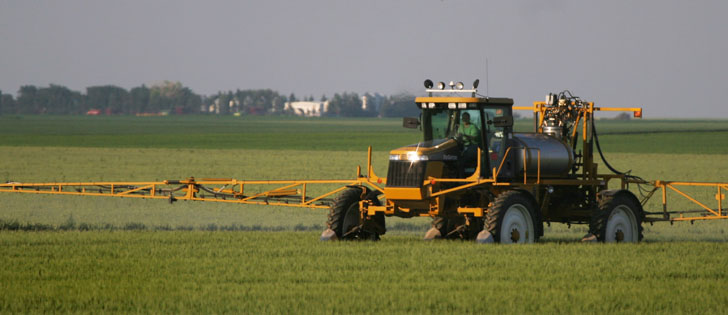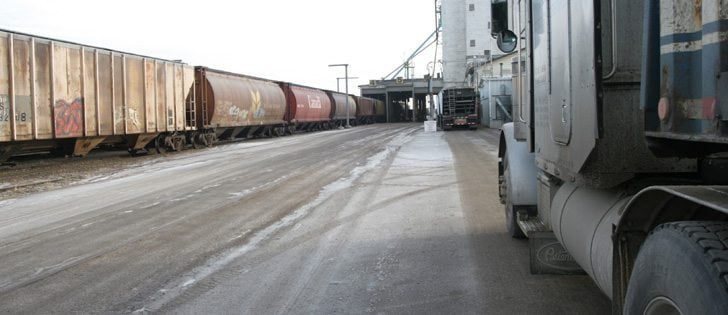Gypsum piles | The greyish white substance is a natural source of sulfur, can be mixed with manure to reduce smell and nitrogen leaching, and helps reduce sodium in the soil
Farmers now have a fertilizer option that’s free for the taking.
An estimated 100,000 tonnes of gypsum, which was used to make drywall for 25 years, sits at the site of the old Domtar drywall plant in Saskatoon.
Gypsum is a natural fertilizer made up of calcium sulfate dihydrate, and gypsum drywall is 90 percent gypsum and 10 percent paper facing and backing.
Commercial real estate developer Jeff Howsam bought the 29 acre site in Saskatoon’s north end in 1998. With the deal he inherited seven acres of the whitish-grey substance that looked like lumpy dried porridge.
Read Also

Canola oil transloading facility opens
DP World just opened its new canola oil transload facility at the Port of Vancouver. It can ship one million tonnes of the commodity per year.
Piles of gypsum had grown steadily during 25 years of drywall production. Drywall that had been over or undercooked or had various manufacturing defects was piled north of the factory.
Howsam recognized the benefits of recycling the product.
“I didn’t want the gypsum to go into a landfill and be unused,” he said.
“I would like to develop the land and I would like someone to be able to benefit from natural fertilizer.… Nobody is after me to get it out of there. It’s a self-inflicted desire, I guess you might say, to get it rolling.”
Howsam said he would ideally like people to take large quantities of gypsum to minimize his processing and loading costs.
“If the product is sold in small quantities, then I’m looking at something in the neighbourhood of $25 a ton and on a downward basis to zero if a person takes 4,000 tons or more,” he said. “There’d be a motivation for users to use larger quantities of it, or for two or three farmers to get together, or a large Hutterite colony, or whatever the case might be.”
Howsam uses a tractor and breaking disk to work the pile, which is then pushed into a larger pile for loading directly or run through a trammel screener to remove larger objects and debris.
“If we go through this screening process and load, then we need something for it. If someone comes in and loads significant quantities of it, then by all means, take it away,” he said.
A loader and a three yard bucket and track hoe on site make loading quick work.
John Cote agreed to take 4,000 tons this past year. His vegetable operation is near Saskatoon, and he has so far used 900 tons for his farm’s composting program. Cote was im-pressed with how clean the product was and happy with the results.
“It took the smell right out of the compost and hopefully it will prevent chemical leaching of nitrogen that would occur naturally,” he said.
He sees spinoff benefits for dairy and other intensive livestock operations if the product is mixed straight into manure.
“Mixing it with compost is perfect,” he said.
“As their manure composts, they just go to the field and spread everything. Now it’s this beautifully composted kind of mixture.”
Jeff Schema, a soil scientist at the University of Saskatchewan, tested Howsam’s gypsum during the 1990s to see if there was a potential use as a source of sulfur.
Schoenau and colleagues experimented in controlled environment growth chambers and did field trials in sulfur deficient grey soil. The tests produced encouraging results.
“We actually found it to be a good source of sulfur for canola production,” he said.
Schoenau said gypsum can also be used to reclaim sodic soil.
For example, if there is good drainage, gypsum can be applied to soil that is saturated with sodium from a brine spill during oil drilling and the calcium will leach away the sodium.
An ammonium sulfate pearl application is likely a more common fertilizer choice in Western Canada than gypsum, but Schoenau sees benefits, provided the producer has the equipment to spread it.
“All fertilizer nutrients are getting rather expensive these days and in my opinion, the ability to take what would otherwise be a waste material and actually recycle it and use the nutrients in it is beneficial for everyone.”

















